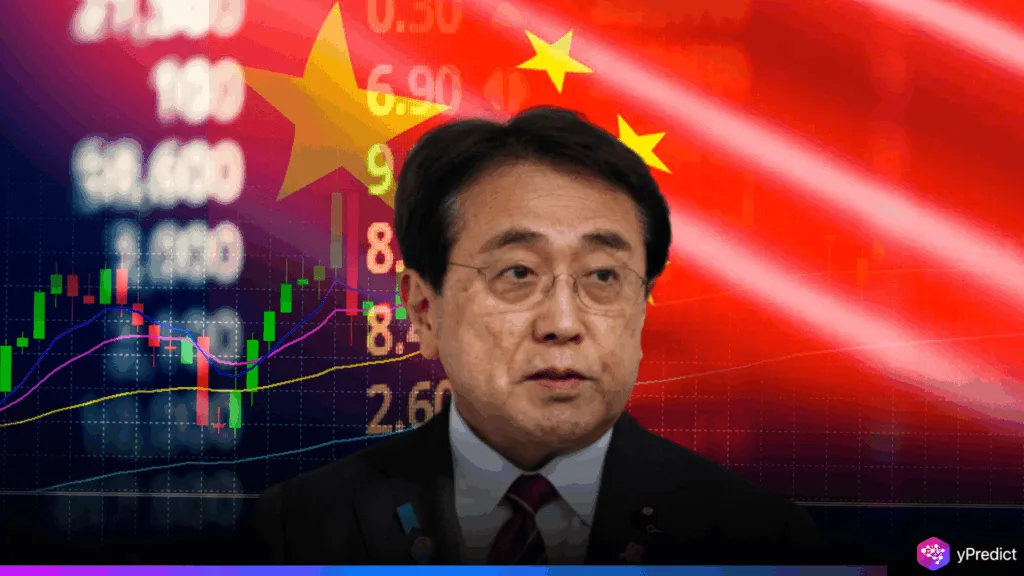
U.S.-Japan trade talks are critical as both countries seek solutions to tariffs that are disrupting Japan’s economy. After meeting with U.S. Treasury Secretary Scott Bessent and Commerce Secretary Howard Lutnick, Japan’s chief negotiator, Ryosei Akazawa, expressed optimism.
The auto, steel, aluminum, and auto parts industries that were suffering significant financial losses were the main topics of the negotiations. Therefore, as the G7 summit approaches, pressure for progress is increasing. Another factor that might affect the outcome is a possible meeting between Japanese Prime Minister Shigeru Ishiba and U.S. President Donald Trump.
Furthermore, Japan highlighted tariffs’ broader impact on supply chains and regional trade. Experts think that a settlement might boost trust in Japan’s manufacturing industry, which contributes close to 20% of the country’s GDP. Additionally, economic growth is being slowed by declining export risk and rising input costs. Business executives and investors are strongly urging quick policy action in response to it.
Trade Talks Show Progress Toward Lifting Painful Tariffs
The fifth round of U.S.-Japan trade talks showed tentative progress on easing tariffs that have burdened Japan’s economy. These include a base rate of 10% and penalties of up to 50%, with a further 24% hike threatened if no agreement is reached by July.
Phased tariff rollback frameworks are being developed by technical committees. In addition, negotiators are considering energy imports and digital trade protections as negotiating tools. Japan is looking for guarantees against new mid-talk tariffs to secure a long-term, viable agreement.
Can Tariff Negotiations Save Japan’s Export Economy?
Japan’s export-heavy economy remains at risk from ongoing U.S.-imposed tariffs. The cost burdens in key industries have translated into rising prices and shrinking profits. Therefore, Japan has put forth a flexible model that lowers auto tariffs according to a nation’s contribution to the U.S. auto market in order to address this issue.
The scope of the U.S.-Japan trade talks also includes non-tariff barriers and broader economic cooperation. Japan’s Foreign Ministry noted that discussions were specific and productive, reaffirming shared commitments to resolve trade frictions and boost collaboration.
Furthermore, some analysts have pointed out that in exchange for lower tariffs, Japan might grant U.S. agricultural products more market access. Meanwhile, Japanese corporations are lobbying hard to ease the burden on exporters and protect jobs at home.
G7 Summit May Decide the Future of U.S.-Japan Trade Talks
The upcoming G7 summit may serve as a turning point for U.S.-Japan trade talks. It might gain momentum if Trump and Ishiba have a bilateral conversation. Although there is clear urgency, Japan has made it clear that its national interests will not be compromised.
To improve its negotiating position, Japan is providing extra incentives, such as defense purchases and cooperation on advanced shipbuilding. Therefore, the outcome of these negotiations will be crucial to Japan’s economic future as the July tariff hike approaches.
A comprehensive deal could also reinforce both countries’ positions amid growing global trade competition, particularly from China. Therefore, the G7 summit is a test of global leadership and economic diplomacy in addition to being an opportunity for resolution.
Trade Talks Hold Key to Japan’s Economic Recovery
The stakes are high as U.S.-Japan trade talks continue amid deepening economic losses. A final agreement is still elusive, despite recent meetings showing progress. Therefore, to prevent more disruptions, both countries must quickly align before the G7 summit. The world community keeps a close eye on the situation, with diplomatic relations at stake and strategic industries under strain.
Long-term cooperation beyond tariffs, including in AI innovation, semiconductors, and green energy, is expected to feature in post-summit plans. The outcome could reset the tone for U.S.-Asia trade relations for years to come.







